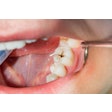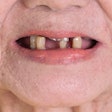
Two-thirds of children and adolescents with type 1 diabetes have dental caries, according to a systematic review published in BMC Oral Health on September 14 that analyzed cases that spanned 20 years. The authors recommended that these patients be screened for early signs of caries and receive preventive treatment during routine dental examinations.
"Our study highlighted that the prevalence and severity of dental caries among children and adolescents with type 1 diabetes was higher than that in the general population," wrote the authors, led by Yan Wang of the Yan Tai Stomatological Hospital in Shandong China.
A U.S. National Health and Nutrition Examination Survey published in 2015 showed that approximately 37% of children ages 2 to 8 and 58% of adolescents had experienced dental caries in primary teeth, they noted.
The authors analyzed 10 studies that were conducted in Asia, Europe, and South and North America from 1997 to 2017 and included 538 individuals. The sample sizes for individual studies ranged from 25 to 87 participants.
Overall, the prevalence of caries in children and adolescents with type 1 diabetes was 67%. The researchers found that dental caries prevalence varied among the continents. Caries prevalence was at its highest at 84% in children in South America.
| Prevalence of dental caries in children based on continent | |
| Continent | Caries prevalence |
| South America | 84% |
| Asia | 67% |
| North America | 64% |
| Europe | 57% |
The differences in caries cases may be due to population characteristics, ethnic backgrounds, diet, duration of diabetes, and treatment, the authors noted.
In addition, the prevalence of caries in children who have diabetes with poor metabolic control was 66%, while the prevalence was lowest at 47% in patients with good metabolic control, the researchers found.
Finally, the prevalence of caries was higher for children younger than age 10 at 80%, compared with the 56% of children who were older than 10.
The review provided a reference that may be used for clinical consideration and epidemiological and clinical research, but the authors noted their analysis had several limitations. The data they used included small sample sizes and high diversity, though they wrote that they may be explained by geographical region and metabolic control status. Also, the original articles did not include some information, such as the duration of diabetes mellitus and insulin treatment, that greatly affect dental caries.
Further research that explores the risk of caries among children with type 1 diabetes would help ensure these patients maintain optimal oral health, the authors wrote.
To decrease the prevalence of dental caries, children and adolescents with type 1 diabetes, especially those with poor metabolic control, should be screened for early signs of dental caries and be examined annually for oral health.
"Moreover, good metabolic control could help reduce and control the prevalence of dental caries among such populations," the authors wrote.




















